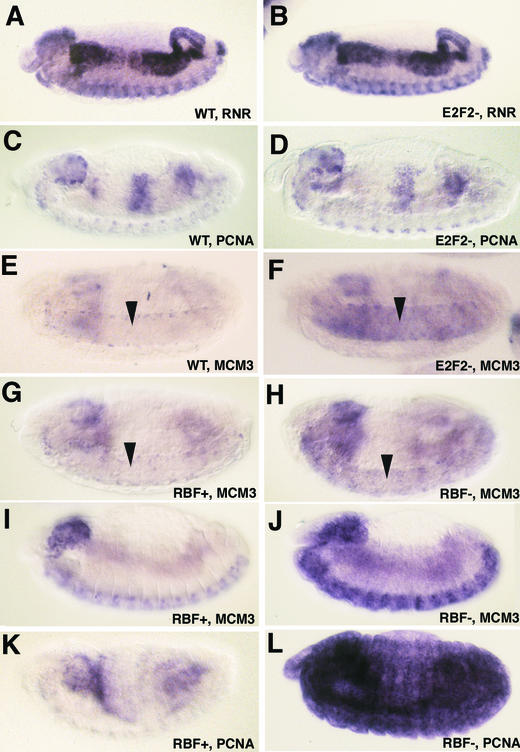FIG. 7.
E2F1 and E2F2 repressors primarily act redundantly during embryogenesis. Each panel contains a germ band retracted embryo subject to in situ hybridization with the indicated probe. Anterior is at left, and dorsal at the top. (A, C, and E) Wild-type embryos. Panels A and C contain embryos at different stages in order to show two different representative patterns of the replication-asssociated gene expression program. (B, D, and F) Embryos lacking both maternal and zygotic E2f2. Note that the pattern of expression is identical to that of the wild type for RnrS and Pcna but not for Mcm3, which is derepressed in the CNS (arrows). The embryos in panels E and F are rotated slightly to the ventral surface. (G, I, and K) Phenotypically normal sibling control embryos of those shown in panels H, J, and L, respectively. (H, J, and L) Embryos lacking maternal and zygotic Rbf1 function. The focal plane in panels I to L is at the epidermis, rather than the interior tissues as in panels A to H, in order to show the ectopic expression in this tissue.

